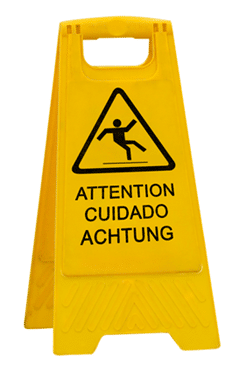Speaking a New Language in Safety

Language of course, is the foundation of culture. The study of language (linguistics) and language as a sign system (semiotics) is essential if one wants to understand how language works. Though not recommended for the faint hearted, the famous Australian scholar M. A. K. Halliday (2009 – The Essential Halliday) is a good start in understanding linguistics.
Though we use language easily, this doesn’t mean the development and meaning of language is easy. Indeed, the formation and meaning of language is incredibly complex.
It wasn’t until the work of Ferdinand de Saussure (1857-1913) that we began to understand the structure of language as a sign system. Following on from Saussure were the ‘Structuralists’ such as Jakobson, Levi-Strauss, Lacan, Bathes and Althusser. Structuralism studies human language, culture and society as structures. The key to understanding language from this view is that all language is situated and interdependent in culture and society. All components of relationships work together through difference, exchange and substitution.
On the complementary side of the same exploration into language are the Phenomenologists (Husserl, Heidegger, Merleau-Ponty, Satre and Ricoeur). The Phenominologists are more concerned about consciousness through understanding language as it is experienced. It is through the appearance of language and our awareness of those appearances that we must understand language. This school of thought proposes that what is missing is a focus on ‘intuition’ (Polanyi), and a direct approach to the inner structures of consciousness itself. One cannot travel too far down this path of phenomenology without an encounter with the metaphysics of presence or tackling the complexities of theology. For example, one cannot raise the critical issues of interest to risk and safety of suffering, pain, harm and death without some pretty heavy work in theology and metaphysics. These are all part of the tradition of social psychology which we explore in the iThink Program.
Further still, studies in Deconstruction (Derrida), Post-modernism and Post-structuralism (Foucault, Lyotard, Baudrillard, Kristeva and Deleuze) tear away at the assumptions of STEM thinking and the idea that the world can be known through ‘meta-narratives’ (complete theories of knowing). This is why I have suggested that safety can only move forward with a transdisciplinary approach to curriculum (https://safetyrisk.net/isnt-it-time-we-reformed-the-whs-curriculum/).
So where does this leave us, do we need to be academics to understand all this to find a new language for safety? Well yes and no, but more importantly there are significant problems if one decides that its all too hard and that the KISS principle is all that is needed to ‘speak’ safety. An example may suffice.
The new development of ‘women in safety’ (WiS) is to be commended. However, if women simply adopt the same old masculinist language from the STEM safety foundation, then nothing will be ‘ different’ (https://safetyrisk.net/can-there-be-a-feminist-safety/ ). Similarly, talking about ‘safety differently’ doesn’t make it so. Neither does holding to old paradigms and symbols (Heinrich is still being taught, swiss cheese is still popular and numerics still define safety) help move thinking in safety forward.
The challenge for the women in safety movement is to find a new language that helps articulate what is ‘differant’ (Derrida). This ‘differance’ (spelling intended) should seek to explain the WiS movement and a dialectic of distinction, identity, discernability, interval and deference. In being ‘different’ one can signify non-identity but also a relationship that is the same. So the big question for women in safety is, in what way are women ‘differant’ in safety? I might suggest some dialectical oppositions in language for debate. Maybe women in safety language should be talking about the following:
· Helping not hegemony
· Companionship not control
· Unconscious not conscious
· Presence not power
· aRational not rational
· Fulfilment not success
· Conversation not calculation
· Trust not technique
· Ownership not onerous-ship
· Tackling not telling
· Dialectic not didactic
· Subjects not objects
· Symbols not text
· Social not individual
· Culture not systems
· Life not zero
Of course such oppositions cannot be maintained, the very nature of human fallibility will not allow it (also why zero is a nonsense). This is why risk is best tackled through an existentialist dialectic (as discussed in my latest book Tackling Risk, A Field Guide to Risk and Learning https://www.humandymensions.com/product/tackling-risk/).
Learning is not about ‘fixity’ but rather is discovered in the ‘movement’ (dialectic) between oppositions. This is what was discovered early in the 1960s feminist movement, change was sought initially through changes in language and semiosis (meaning) followed. This is where the WiS might find their ‘differance’.
As with all need for culture change, the process will be slow but a new language is the beginning.



Do you have any thoughts? Please share them below